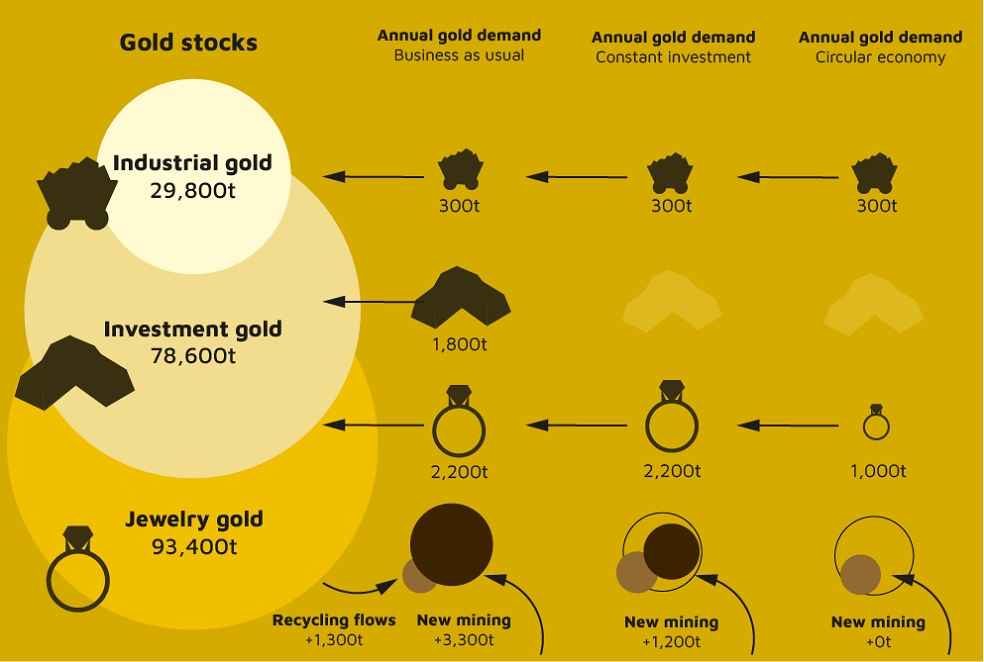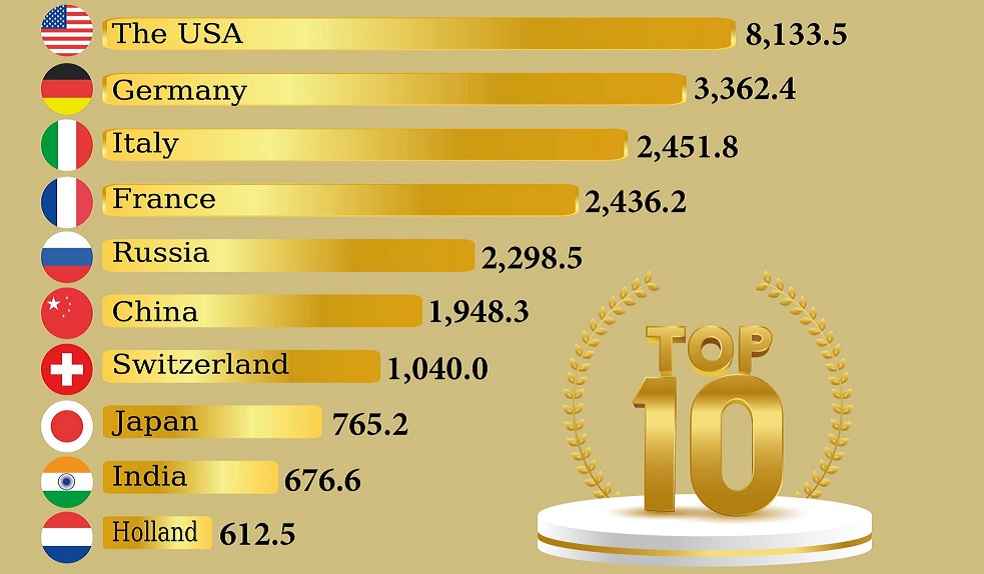Escalating environmental concerns have put the gold mining sector under severe scrutiny, urging a significant paradigm shift. A recent study from the University of Oxford highlights ‘Gold Mining Threatens,’ advocating for a drastic cut, or a halt, in gold extraction. The paper, published in Environmental Research Letters, posits that the existing gold circulation adequately meets technological and trade demands.
The researchers underscore that the global gold industry’s carbon footprint amounts to 0.3% of global emissions, overshadowing the emissions from all intra-European aviation. Additionally, small-scale gold mining contributes to 38% of global mercury emissions from human activities, primarily in the global south, posing severe neurological risks.

A startling revelation from the study is the excessive water usage in gold mining. It takes an average of 265,000 litres of water to produce a single kilogram of gold. Despite its use in technology, merely 8% of gold serves this sector, while a whopping 92% is converted into jewellery or stored in bank vaults annually.
The study explores two futuristic scenarios for the gold industry; a 60% reduction in mining with fixed invested gold stock, and a full transition to a circular gold economy, ceasing all mining activities. In the latter scenario, recycling gold alone could meet the technological demand while providing a significant surplus for jewellery production. This prospect challenges the long-held belief in the necessity of continued gold mining.
Stephen Lezak, the lead author and a researcher at the Oxford Smith School, acknowledges the harsh reality this proposal unveils for gold mining companies and the approximate 19 million artisanal gold miners globally dependent on this industry. He emphasizes a “just transition” akin to that proposed for fossil fuel-based industries to ensure communities do not bear the brunt of this shift.

Co-author Morgan Bazilian, the Director of the Payne Institute and a Professor of public policy at the Colorado School of Mines, concurs that involving communities in these discussions is crucial as they stand to gain or lose the most in transitioning to a circular gold economy.
Despite the clear environmental adversities and limited benefits gold mining entails, institutions like the World Bank have invested $800 million in nine gold mines across Africa, Asia, South America, and the Pacific Islands since 2010. This investment starkly contrasts the growing consensus among environmentalists and academics for reducing gold mining activities.
The findings also challenge the traditional appreciation of gold’s value, given its extensive usage in jewellery and minimal contribution to technological advancements. Gold’s unique properties, including its conductivity and resistance to tarnish, make it vital for certain technological and medical applications. However, with a substantial amount of gold already above ground, the need for continued extraction appears increasingly unjustifiable.

The call for a significant reduction in gold mining aims not only to alleviate the environmental burden but also to steer the global economy towards more sustainable practices. This transition to a circular gold economy presents a viable, albeit partial, solution towards a greener and more sustainable world, forcing nations and industries to reconsider the real cost of gold.
Major Interesting Facts About Gold

India holds the position of one of the most substantial gold consumers globally. Meanwhile, when it comes to gold production, the leading nations are listed below with their respective production figures:
- China: 383.2 Tonnes
- Russia: 329.5 Tonnes
- Australia: 325.1 Tonnes
- United States: 200.2 Tonnes
- Canada: 182.9 Tonnes
- Peru: 143.3 Tonnes
- Ghana: 142.4 Tonnes
- South Africa: 118.2 Tonnes
- Mexico: 111.4 Tonnes
- Brazil: 106.9 Tonnes
Versatility in Jewelry and Craft: Approximately 78% of gold mined each year finds its way into jewelry owing to its malleability, tarnish resistance, and alluring yellow hue. It can be drawn into thin wires, hammered into sheets, or molded into various shapes, making it a favorite among artisans.
Medical Marvel: In medicine, gold salts and radioisotope forms are employed to treat severe rheumatoid arthritis and tuberculosis. Its isotopes play a role in diagnosing and treating specific illnesses, showcasing its importance beyond aesthetics.

Technological Backbone: The realms of GPS, satellite technology, and radiation shielding for astronauts are heavily reliant on gold. It facilitates rapid navigation, protection from harmful radiation, and supports life-saving medical equipment technology.
Noble Status: Gold is classified as a ‘noble’ metal because it resists corrosion and retains its brilliance over time, placing it in the illustrious company of metals like platinum and silver.
Density and Purity: Being one of the densest metals, a cubic foot of gold weighs more than half a ton. It’s usually found in nature in a comparatively pure form, making it a metal of choice for various applications.
Physical Characteristics: With a melting point of 1064.43° and boiling point at 2856.1°, gold’s softness allows a single gram to be flattened into a one-square-meter sheet. This feature has led to its use in space suits’ visors as a protective film.

Edible Element: Gold, being odorless, tasteless, and non-toxic, finds its way into culinary delights, often used as a decorative element in luxury foods and beverages.
Historic Value Preservation: Gold’s history as a value preserver through generations makes it a preferred asset during economic uncertainties. It acts as a hedge against inflation, with its value often moving inversely to financial markets.
Global Reserves: The US Federal Reserve Bank in New York reportedly holds 25% of the world’s gold reserves, underlining the metal’s significance in global economic structures.

Record-breaking Feats: From the colossal ‘Welcome Stranger’ nugget found in Australia in 1869 to the one-tonne coin cast by the Perth Mint in Western Australia, gold continues to be at the heart of monumental achievements.
Historic Currency Standard: Once a benchmark for currencies, gold saw its last currency peg with the Swiss Franc until 1999, post which currencies moved to fiat systems.
Global Consumption and Production: China, being the largest consumer and producer of gold as of 2018, highlights the metal’s enduring demand and significance across cultures.
DON’T MISS IT: War on Waste: Bans Unsold Fashion Destruction



